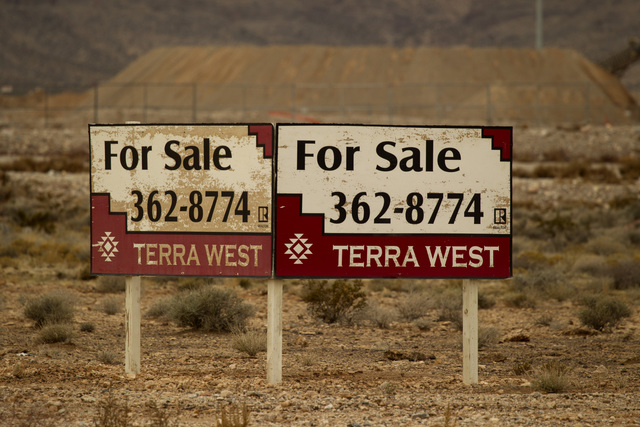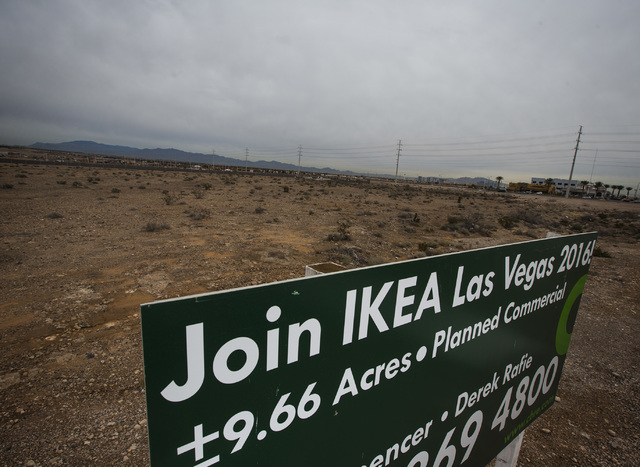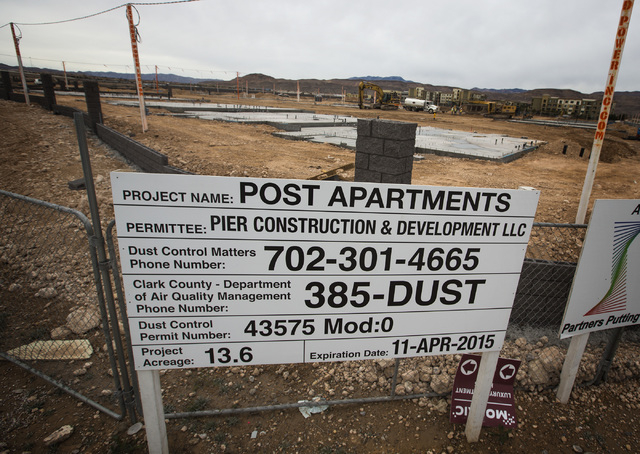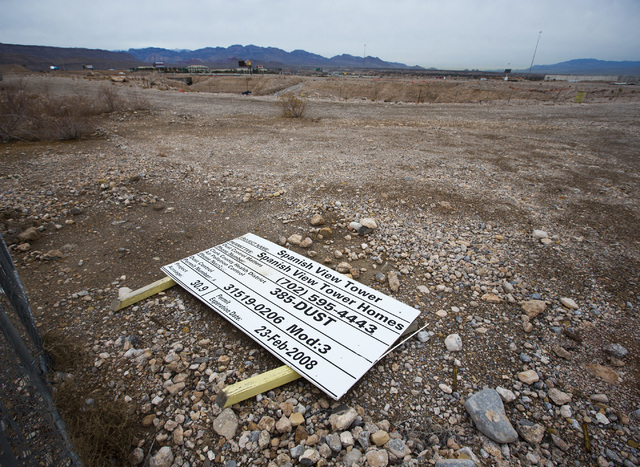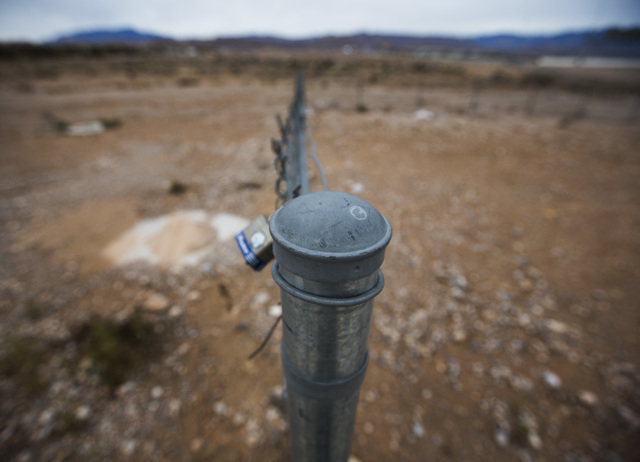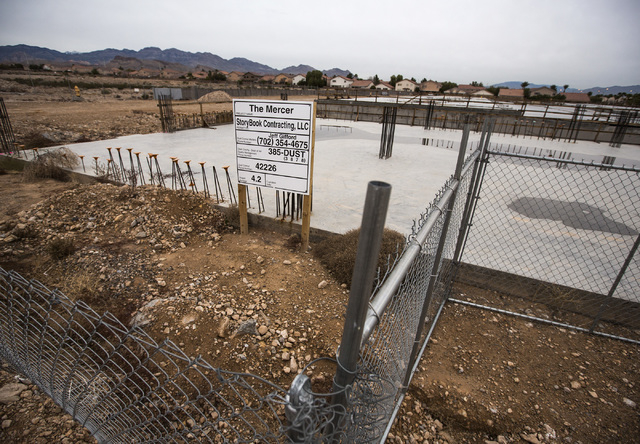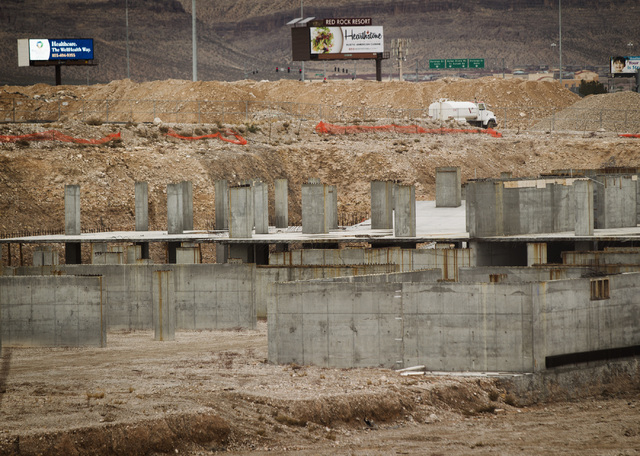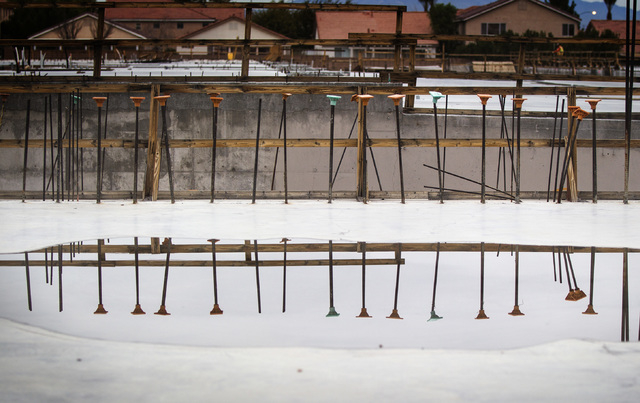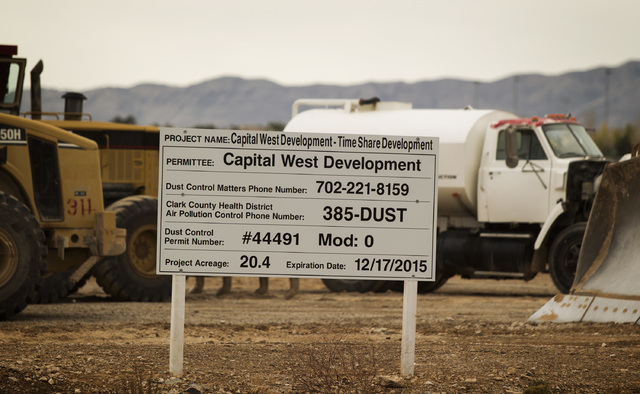Las Vegas Curve makes a comeback
If you’re looking for the epicenter of the Las Vegas Valley’s housing earthquake, don’t look to the northwest.
Don’t bother with Henderson, or even North Las Vegas.
Consider instead the 5-mile stretch of the 215 Beltway from Rainbow Boulevard to Tropicana Avenue that real estate locals call “the curve.” Sure, home and land prices plummeted and foreclosures soared across the valley. Still, no other corner of the city can claim the sheer, concentrated development carnage that beset the curve at the recession’s 2007 dawn.
Something happened on the way to recovery, though. Thanks to renewed commercial development in the area, the curve began bouncing back. In the past 18 months, developers have revived stalled projects and refashioned others into new uses. Whether it’s too much too soon is something industry observers say they’re watching as the market digests the lessons of the curve’s epic bust.
A FROTHY BLEND
The curve’s first big developments were safe bets. Two hospitals — Spring Valley Hospital Medical Center on Rainbow and Southern Hills Hospital and Medical Center on Russell Road — opened in 2003 and 2004, built to fill the medical needs of a burgeoning population in southwestern master-planned communities such as Southern Highlands, Rhodes Ranch and Mountain’s Edge.
The southwest, then as now, was one of the hottest residential submarkets in the valley, said Dennis Smith, president and CEO of local analysis firm Home Builders Research. So as the city’s housing market reached peak froth in 2005 and 2006, it wasn’t necessarily unreasonable for developers to envision still more housing, especially along the curve.
And envision they did.
There was ManhattanWest, a $350 million mixed-use project that called for 700 homes, 150,000 square feet of office space and 50,000 square feet of shops and restaurants in 12 buildings on 20 acres at Russell and the beltway. There was also Spanish View Towers, an $800 million project begun in 2005 at Buffalo Drive with plans for 405 units in three 18-story buildings. Sullivan Square, at Durango Road, aimed for eight buildings with 1,300 homes, Class A office space and 45,000 square feet of retail, all around a central park.
Also at Durango, a project actually called The Curve would have had two 18-story condominium towers and a dozen commercial buildings. Just to the east, the Promenada at Rainbow, with 479 units and 60,000 square feet of “high-end boutiques” planned, promised “a blend of urban and resort-style living,” according to Miami-based Cabi Developers.
There were less ambitious projects, too: The Mercer on Tropicana aimed for 113 condos. Nightclub developer The Light Group drew up the two-building, 147-unit Spa Lofts at Rainbow, describing “an urban space” that would “keep an open mind about the infinite possibilities of day-to-day living.”
Unfortunately for The Light Group — and other developers along the curve — even if minds were open, wallets were beginning to clap shut.
FROM FROTHY TO FRENZY
The curve’s downturn-era demise started with vast expanses of vacant land, said Brian Gordon, a principal in local research firm Applied Analysis.
Real estate abhors a development vacuum, so where there’s empty land in a hot market, construction must follow. Back in 2004 and 2005, commuters through the curve saw little besides panoramic mountain views. So builders started snapping up land in the area, simply because so many large chunks were available.
The buying frenzy quickly pushed up land costs: The average price per acre in the southwest submarket soared from $244,200 in 2003 to more than $1 million by early 2007, according to Applied Analysis.
That in turn made planned homes more expensive, Gordon said. Developers needed to go more vertical to fit more houses onto each acre. Higher towers meant more costly construction materials and methods, including steel frames and multistory, underground parking.
Those costs cascaded into home prices. You couldn’t buy into ManhattanWest for less than $400,000. Spanish View Towers was asking more than $6 million for some units. The Mercer wanted as much as $700,000 per home.
A few buyers slapped down earnest money to get in on the ground floor. The problem, said Bruce Hiatt of Las Vegas real estate brokerage Luxury Realty Group, was that they were mostly investors, not owner-occupants. That meant they could bail if they got nervous about pricing.
And so they did.
“By 2006, the market was reaching a peak. The bubble was bursting, the handwriting was on the wall, and investors began pulling out very quickly,” Hiatt said. “All of a sudden, you saw this tidal wave of people trying to get out of the market. I had clients in those projects. They saw the price declines. They were fearful of a glut of inventory. Every one of them decided they wanted to try to get their money back.”
When the curve’s market began to fall, it toppled fast.
THE BLOODBATH
ManhattanWest suffered from “a mismatch of what it costs to build one of these things and what people are willing to pay for condos and office space,” then-developer Alex Edelstein told the Las Vegas Review-Journal in December 2008. Banks yanked Edelstein’s financing, and the project ground to a halt by the end of that year. More than $30 million in contractors’ liens followed in spring 2009.
Spanish View Towers mustered only 40 sales before it sputtered to a stop in 2006. Sullivan Square unraveled in a 2008 management dispute between partners after subcontractors didn’t get paid. The Curve never made it to the 75 percent presale level lenders required for construction financing. Nor could The Mercer pay contractors. Spa Lofts quietly faded away, missing altogether its 2007 construction start date.
By 2009, when The Mercer’s developers dismantled the few sticks they had poked into the ground, the bloodbath was complete.
“No one ever dreamed it would fall as far as it did,” Smith said. “And everyone was in denial about the price drops. That’s the euphoria we saw with pricing. Everyone just thought it was all too good to fail.”
The submarket did fail. But lately, failure is transforming into modest success along the curve.
COMING BACK
ManhattanWest has new life under new developers. The Krausz Cos. of Los Angeles and SWLV Development of Las Vegas partnered to relaunch the project as The Gramercy in September 2013. More than half of its 200,000 square feet of office space is occupied or under contract, with tenants including health care consultant HMS Holdings Corp., homebuilder Touchstone Living and executive-suites operator Regus. It has restaurant deals with DW Kitchen + Market and Alex Stratta Italian Steakhouse. And it has begun marketing more than 200 apartments.
Meanwhile, The Curve’s developers gave up on their mixed-use concept and sold 26 acres for $21.3 million on Dec. 22 to retailer Ikea, which plans a 351,000-square-foot store to open in summer 2016.
Credit some of the bounceback to slow but steady commercial development surrounding the curve.
Ultimate Fighting Championships parent Zuffa LLC bought 24 acres for a corporate headquarters at Jones Boulevard and the beltway in August 2013. Also, Freeman Exhibit Services, Pepsi Bottling Co., SHFL entertainment and casino operator Golden Gaming are building or have opened operations along the beltway’s southern section. Infrastructure and retail services are following those jobs. It finally makes sense to build more homes in the area, Hiatt said.
“People want a shorter commute, and population growth is rebounding. You needed the jobs and offices to help support neighborhood services. Then, you get people saying, ‘Wow, we need residential here,’ ” he said.
The curve has benefited from a reset on both pricing and land use.
Land prices in the southwest retreated to just more than $200,000 an acre — a fifth of their peak value — by early 2013. Developers buying troubled projects got them for pennies on the dollar. Take the Krausz Cos. and SWLV Development, which bought the $350 million ManhattanWest for $20 million in 2013 with plans to build it out for $30 million. The Gramercy will offer apartments for rent, not sale, and starting at around $1,000 a month, they will be considerably more affordable than the $1 million homes Edelstein planned.
Some projects are seeing different land uses altogether. That’s the case with the IKEA deal, which Smith applauds.
“I like that move. We don’t need any more of that type of residential product down there,” he said.
In fact, the market might not even need what’s now underway, he said.
LESSONS LEARNED IN RECESSION
Based on current local homebuying trends, the curve still might be overheated, even in today’s more circumspect climate, Smith said. Local new-home closings have held steady in recent years at roughly 6,000 units a year, well below the 30,000-plus closings of the boom.
Nor does it help the curve that Downtown Summerlin, under development along the beltway at Charleston Boulevard, plans enough condo and apartment units for 10,000 residents over the next decade.
“It will be interesting to watch. At this point, I don’t see how anyone can substantiate the level of demand that’s needed to support a lot of new projects like this in any part of town,” Smith said. “A year from now, we may see that the market is starting to trend a little better. It looks like 2015 will be that transition year where we’re going to either see some positive movement, or more of the same.”
Still, there is pent-up demand for housing in the southwest, Smith said, and homebuyers under 40 in particular could accept some of the high-density, mixed-use projects underway along the curve.
Even if it doesn’t work that way, the curve won’t be as huge a failure the second time around, he added, simply because costs and scope of construction are so much more modest.
“The current market level is based on the recession we went through, and it’s one that I think most people who have been here for any length of time feel comfortable with,” Smith said.
For now, at least, the market seems to have taken to heart what it learned in the downturn, and that should prevent heavy overbuilding, Gordon said.
“When you think about the roller-coaster ride we’ve been on over the last decade with respect to real estate values, development opportunities and project viability, there’s no question the Las Vegas community got ahead of itself,” he said. “The market was equally, if not more, penalized during the downturn. These were tough lessons for individuals as well as businesses. But the measured pace of growth post-recession has been a welcome sign that many people learned lessons during that time frame, and I think everyone is operating much more cautiously than they did during the heyday.”
The curve also will benefit long-term from its location minutes from the city’s main employment center — the Strip — and from McCarran International Airport, Gordon said.
But mostly, the curve simply might be a submarket whose era has finally come, Hiatt said.
A decade after developers began converging on land along the curve, the Summerlin master plan has moved so far south that it bumps against the area, he said. Throw in nearby commercial development, and new housing is a natural.
“They were just way before their time,” he said.
Contact Jennifer Robison at jrobison@reviewjournal.com. Follow @J_Robison1 on Twitter.



